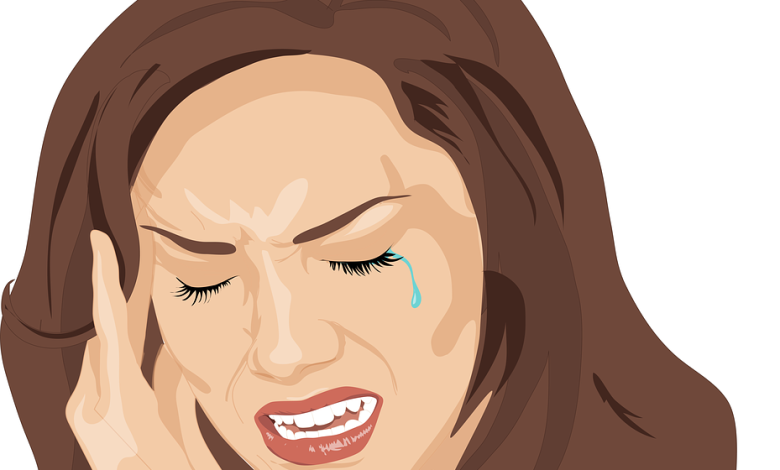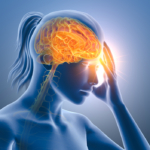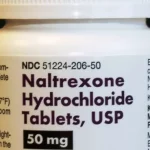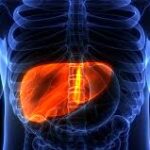20 Types of Headaches, Causes, Locations, Drug Triggers,

What is a headache?
Headache is a common condition that is characterized by pain or discomfort in the head or neck area. It can be caused by a variety of factors, including tension, stress, illness, injury, dehydration, and eye strain, among others.
Headaches have been around for centuries and have been documented throughout history. Ancient Greeks believed that headaches were caused by an imbalance of bodily fluids, while the Egyptians believed that headaches were caused by evil spirits.
In the modern era, headache research has advanced significantly, and we now know that headaches can have a wide range of causes and triggers. Despite these advances, headaches remain a common and often debilitating condition. According to the World Health Organization, headaches are one of the most common disorders of the nervous system, affecting people of all ages and backgrounds.
Classification
Headaches are broadly classified as either primary or secondary.
Primary headaches
These headaches are not caused by an underlying medical condition and are the result of overactivity or problems with pain-sensitive structures in the head. There are several types of primary headaches. Here are 10 common types of primary headaches:
1. Tension headache: This is the most common type of primary headache, characterized by a mild to moderate, dull, and achy pain on both sides of the head, often described as a band squeezing the head. Tension headaches can be caused by stress, muscle tension, poor posture, and eye strain.
2. Migraine headache: Migraines are a type of recurring headache that is typically severe and accompanied by other symptoms such as nausea, vomiting, and sensitivity to light and sound. Migraine headaches are usually one-sided and pulsating. They are caused by a combination of genetic and environmental factors.
3. Cluster headache: Cluster headaches are a type of recurring headache that occurs in cycles or clusters, usually lasting several weeks to months. They are characterized by severe pain around one eye, with other symptoms such as redness, watering of the eye, and stuffy nose. The cause of cluster headaches is not well understood.
4. Hypnic headache: Hypnic headaches are a rare type of primary headache that typically occurs in older adults and wake them up from sleep, often at the same time each night. They are characterized by throbbing pain on both sides of the head and can last up to several hours. The cause of hypnic headaches is not well understood.
5. Hemicrania continua: Hemicrania continua is a rare type of primary headache that is characterized by a continuous, one-sided headache with occasional spikes in intensity. It is typically responsive to treatment with the medication indomethacin.
6. Trigeminal autonomic cephalalgia: Trigeminal autonomic cephalalgia (TAC) is a group of primary headache disorders that are characterized by severe, unilateral pain in the head, face, and neck, along with autonomic symptoms such as tearing, redness, and sweating. Examples of TAC include cluster headache, paroxysmal hemicrania, and SUNCT (short-lasting unilateral neuralgiform headache with conjunctival injection and tearing).
7. Chronic paroxysmal hemicrania: Chronic paroxysmal hemicrania is a rare type of primary headache that is characterized by severe, one-sided headaches that occur multiple times per day, typically lasting from a few minutes to an hour. It is typically responsive to treatment with the medication indomethacin.
8. New daily persistent headache: New daily persistent headache is a type of primary headache that starts suddenly and becomes persistent, with a headache occurring every day for at least three months. It is typically responsive to treatment with a combination of medications and behavioral therapies.
9. Primary thunderclap headache: Primary thunderclap headache is a rare type of primary headache that is characterized by sudden, severe pain that peaks within seconds to minutes. It can be a sign of a serious underlying condition, such as bleeding in the brain, and requires immediate medical attention.
10. Primary stabbing headache: Primary stabbing headache is a common type of primary headache that is characterized by brief, stabbing pains in the head, typically lasting a few seconds to a few minutes. The cause of primary stabbing headaches is not well understood.
It’s important to note that each type of primary headache can have unique symptoms and causes, and treatment will depend on the specific type of headache and its underlying cause. It’s important to seek medical attention if you experience frequent or severe headaches, as they may be a sign of an underlying medical condition.
Secondary headaches
These headaches are caused by an underlying medical condition, such as a sinus infection, head injury, or brain tumor. Here are 10 common types of secondary headaches:
Here’s more information about each type of secondary headache:
1. Sinus headache: Sinus headaches are caused by inflammation of the sinuses and are often accompanied by other symptoms such as facial pain, pressure, and congestion.
2. Medication overuse headache: Medication overuse headache is caused by overuse of pain-relieving medication such as aspirin, ibuprofen, and acetaminophen. The headache typically occurs daily and is often described as a dull, constant ache.
3. Cervicogenic headache: Cervicogenic headaches are caused by disorders of the neck and are typically characterized by pain on one side of the head and neck.
4. Post-traumatic headache: Post-traumatic headaches can occur after a head injury and are often described as a dull, constant ache. They can occur immediately after the injury or develop days or weeks later.
5. Rebound headache: Rebound headaches occur as a result of overuse of medication to treat headaches, and are often described as a constant, dull ache that occurs daily.
6. Thunderclap headache: A thunderclap headache is a sudden, severe headache that can be a sign of a serious underlying condition such as bleeding in the brain or stroke.
7. Meningitis headache: Meningitis is an infection of the meninges (the membranes that surround the brain and spinal cord) and can cause a severe headache, along with other symptoms such as fever, stiff neck, and sensitivity to light.
8. Brain tumor headache: A headache caused by a brain tumor is typically described as a constant, dull ache that is often worse in the morning and improves throughout the day.
9. Giant cell arteritis headache: Giant cell arteritis is a condition that causes inflammation of the arteries, often in the head and neck, and can cause a severe headache, along with other symptoms such as jaw pain and vision changes.
10. Intracranial hemorrhage headache: An intracranial hemorrhage is bleeding within the skull, and can cause a sudden, severe headache, along with other symptoms such as weakness or numbness on one side of the body. It requires immediate medical attention.
Types of Medication that Causes Headaches
There are several types of medications that can cause medication-induced headaches, including:
1. Analgesics: Overuse of pain-relieving medications such as aspirin, ibuprofen, and acetaminophen can cause medication-induced headaches.
2. Triptans: Triptans are a type of medication used to treat migraines, but overuse can lead to medication-induced headaches.
3. Opioids: Overuse of opioid medications, such as codeine or oxycodone, can also lead to medication-induced headaches.
4. Ergotamines: Ergotamines are another medication used to treat migraines, but overuse can lead to medication-induced headaches.
It’s important to note that medication-induced headaches are not caused by taking medications as prescribed by a healthcare provider. They occur when someone overuses medication to treat their headaches, typically taking the medication too frequently or in too high of a dose.
If you are experiencing frequent headaches and are concerned that they may be caused by medication overuse, it’s important to talk to your healthcare provider. They can help you determine the underlying cause of your headaches and develop a treatment plan that may include reducing or stopping the use of certain medications.
How many headaches does the average person get in a year?
The average person may experience 1-2 headaches per month, which adds up to 12-24 headaches per year. However, this can vary widely depending on individual factors such as age, gender, and lifestyle habits. Some people may experience headaches more frequently than others, and certain medical conditions or environmental factors may increase the risk of headaches. It’s important to pay attention to your headache patterns and seek medical attention if your headaches become more frequent, and severe, or are interfering with your daily activities.
What causes headaches every day?
It is not uncommon to hear people say “Why am I getting headaches every day all of a sudden” There can be various reasons why you are suddenly experiencing headaches every day. Here are some common causes:
1. Stress: High levels of stress can cause tension headaches, which are characterized by a band-like pressure around the head.
2. Poor posture: Sitting or standing in an incorrect posture can put a strain on your neck and shoulders, leading to tension headaches.
3. Lack of sleep: Not getting enough sleep or having poor quality sleep can cause headaches.
4. Dehydration: Not drinking enough water can cause headaches, especially if you are prone to migraines.
5. Eye strain: Staring at a computer or phone screen for prolonged periods can cause eyestrain and lead to headaches.
6. Hormonal changes: Women may experience headaches due to hormonal changes during their menstrual cycle or pregnancy.
7. Medication overuse: Overusing pain-relieving medication, such as aspirin or ibuprofen, can lead to rebound headaches.
8. Underlying medical conditions: Certain medical conditions, such as high blood pressure, sinus infections, or even a brain tumor, can cause frequent headaches.
If you are experiencing daily headaches, it’s important to see a healthcare provider to determine the underlying cause and receive appropriate treatment. Your provider may suggest lifestyle changes, medication, or other interventions depending on the cause of your headaches.
How To Get Rid Of Headaches
The treatment for headaches depends on the underlying cause of the headache. Here are some general tips that may help alleviate headaches:
- Identify and avoid triggers: Keep track of when your headaches occur and identify any triggers, such as certain foods, stress, or lack of sleep. Try to avoid or minimize these triggers.
- Relaxation techniques: Practice relaxation techniques such as deep breathing, meditation, or yoga to help reduce stress and tension in your body.
- Over-the-counter pain relievers: Over-the-counter pain relievers such as ibuprofen or acetaminophen may help relieve mild to moderate headaches. However, it’s important to follow the recommended dosage and not overuse these medications, as it can lead to medication-induced headaches.
- Hydration: Drinking enough water and staying hydrated can help prevent dehydration-related headaches.
- Massage: Massaging the temples, neck, and shoulders can help reduce tension and relieve headaches.
- Heat or cold therapy: Applying a cold or warm compress to the forehead or neck may help alleviate headaches.
- Regular sleep patterns: Maintaining a regular sleep schedule and getting enough sleep can help reduce the occurrence of headaches.
If your headaches are frequent, severe, or interfering with your daily activities, it’s important to see a healthcare provider. They can help determine the underlying cause of your headaches and recommend appropriate treatment.





